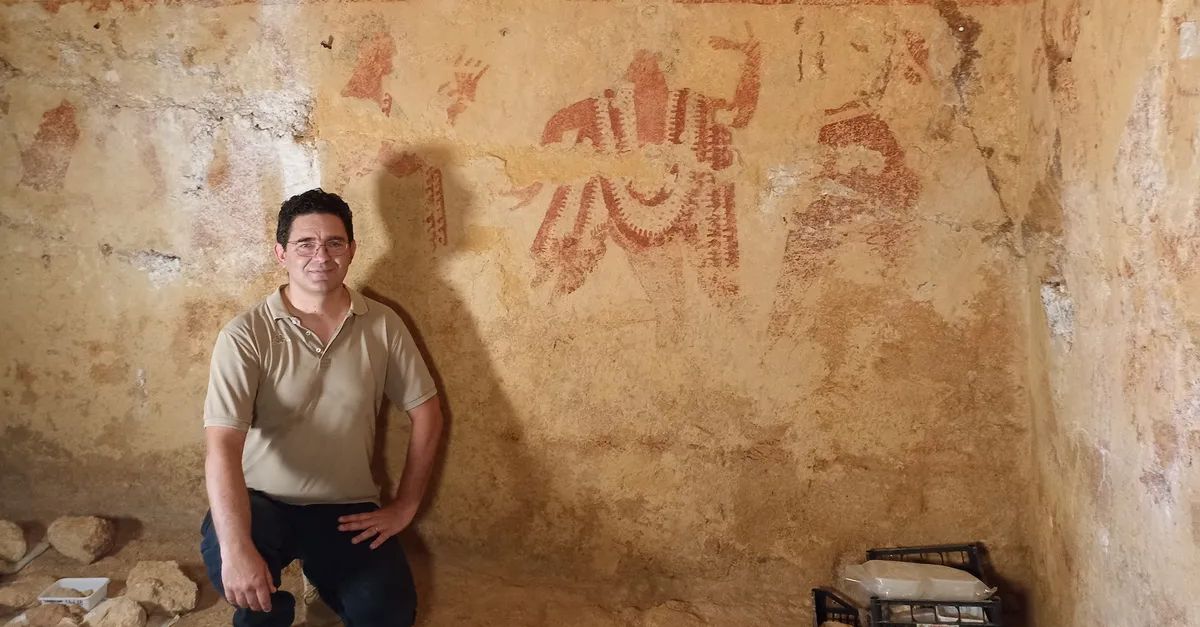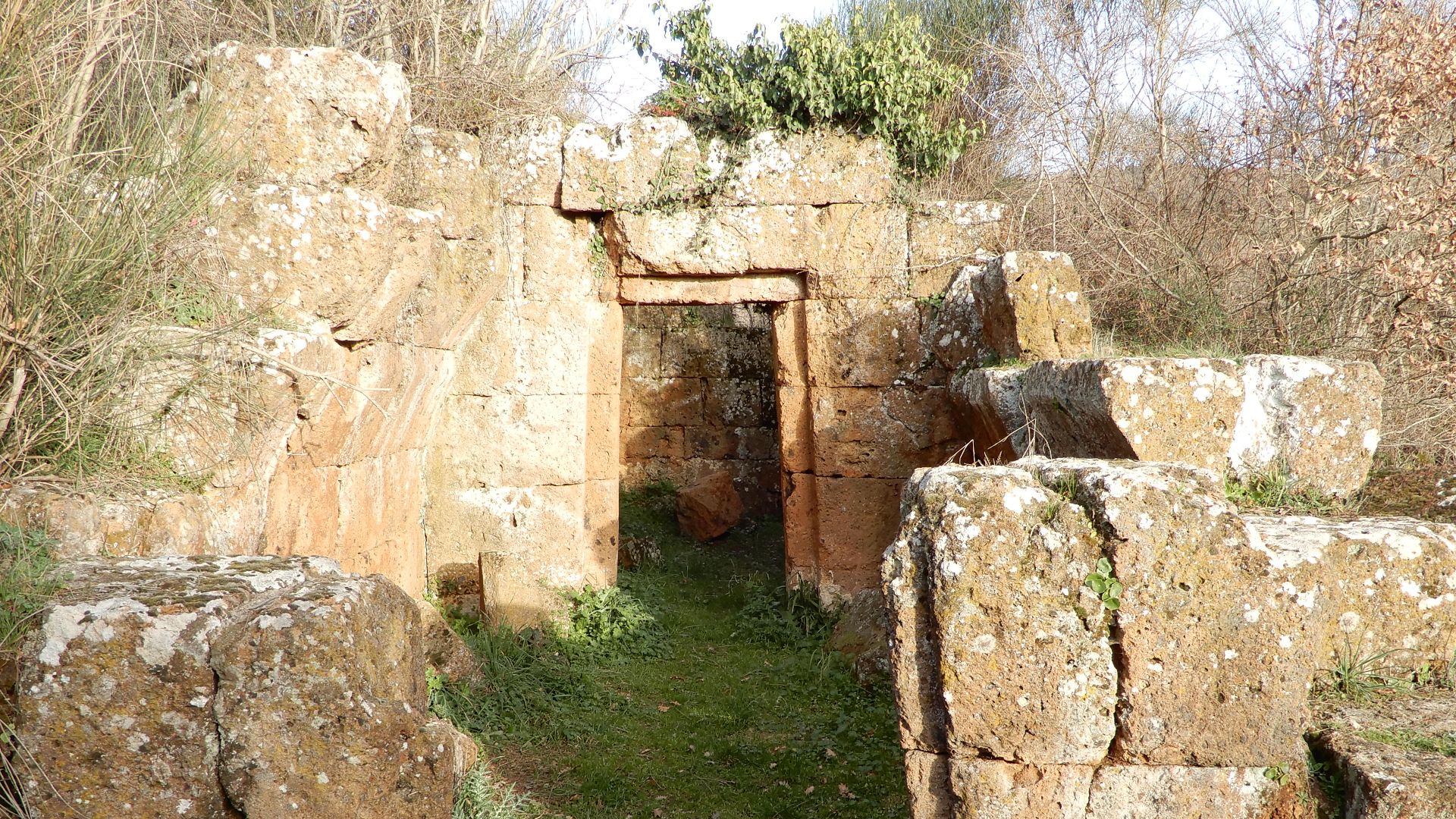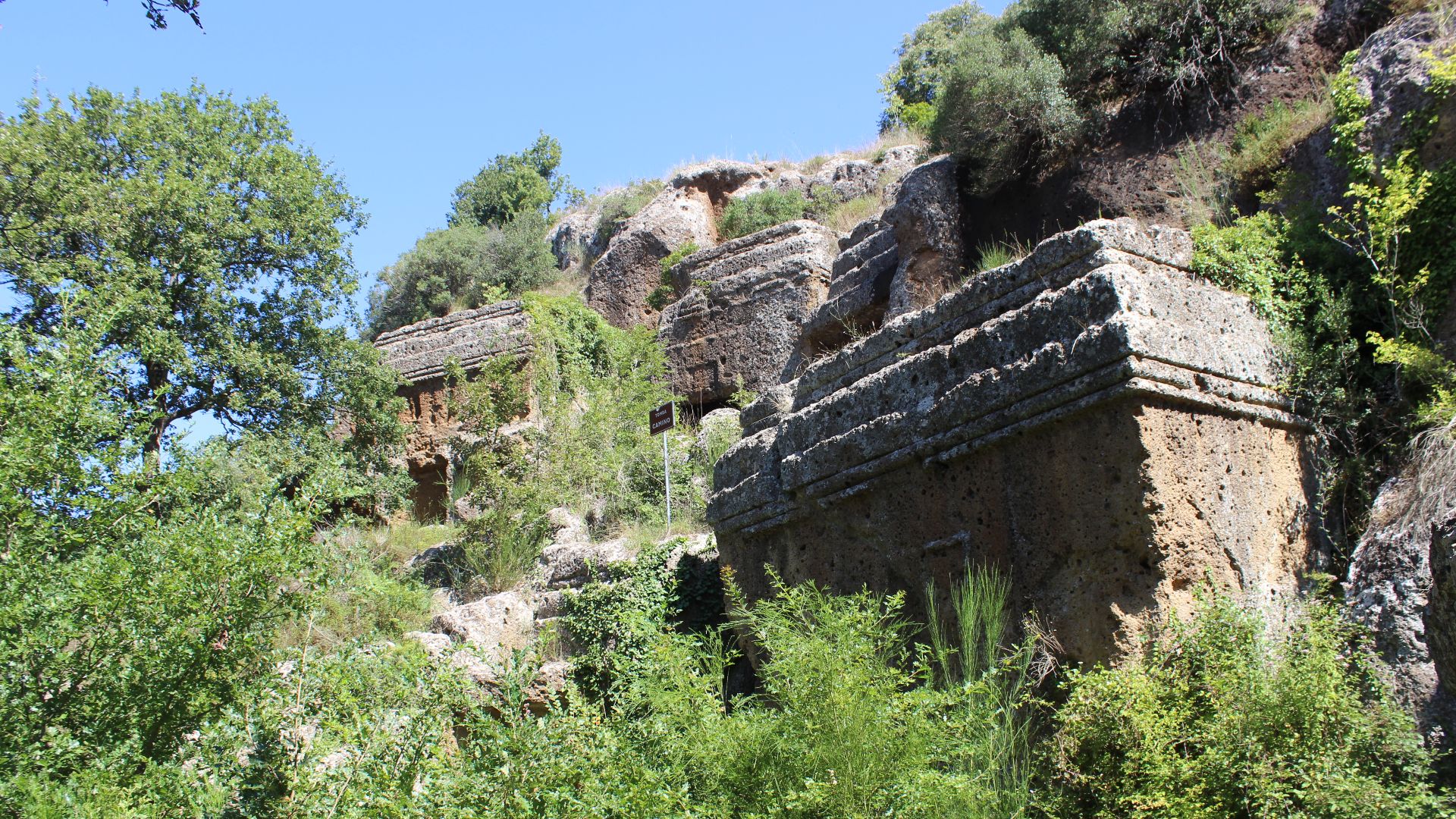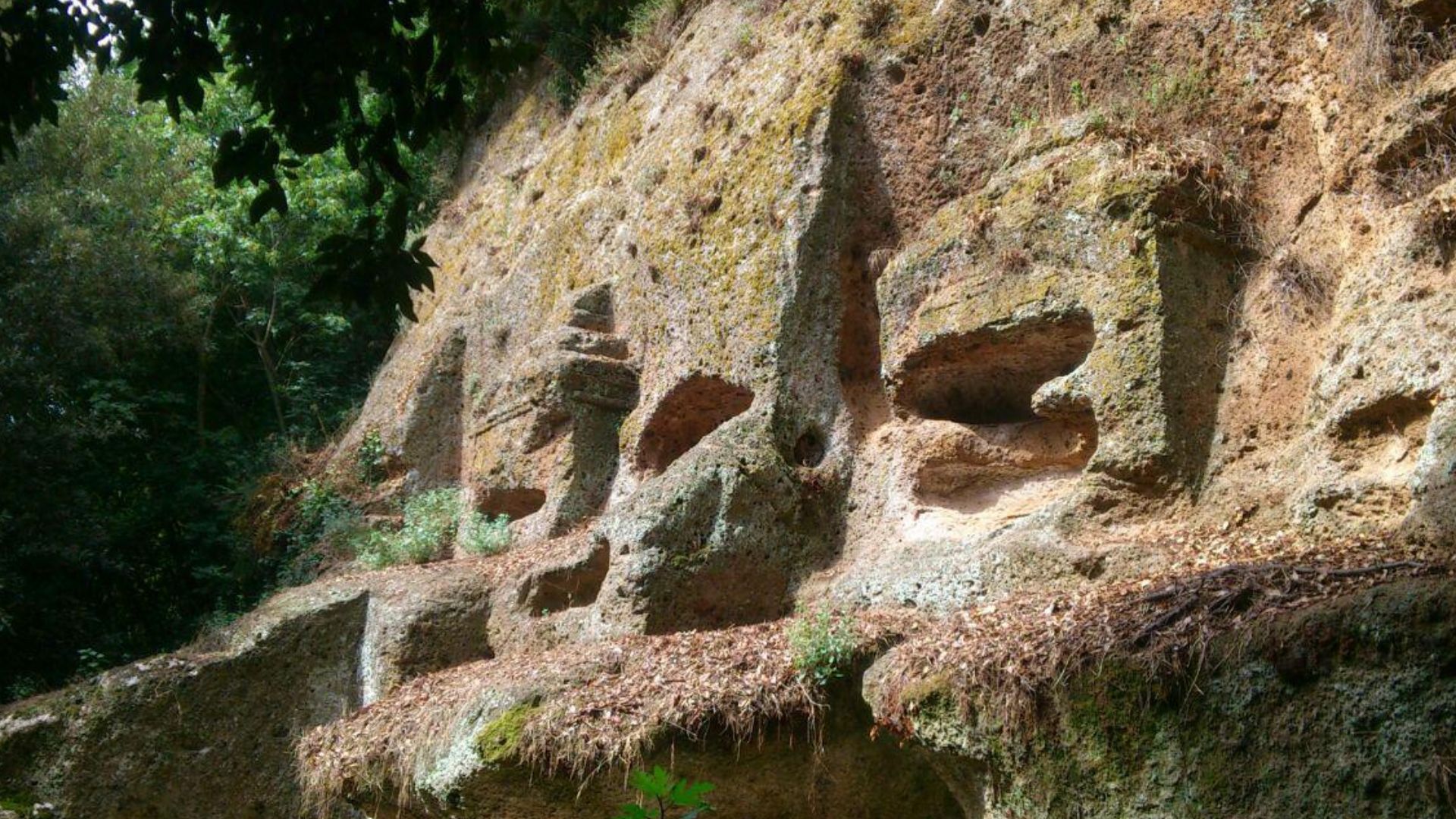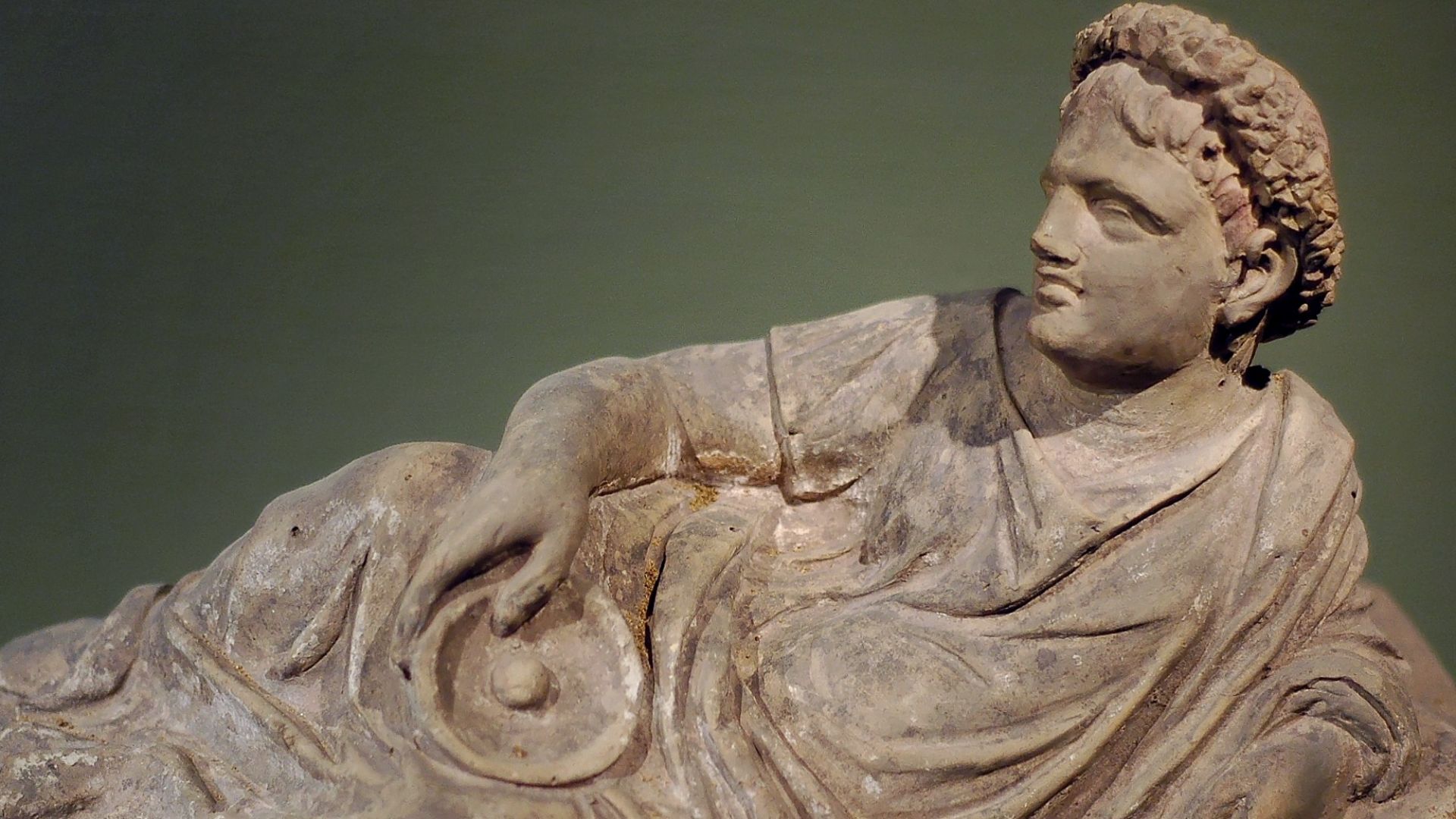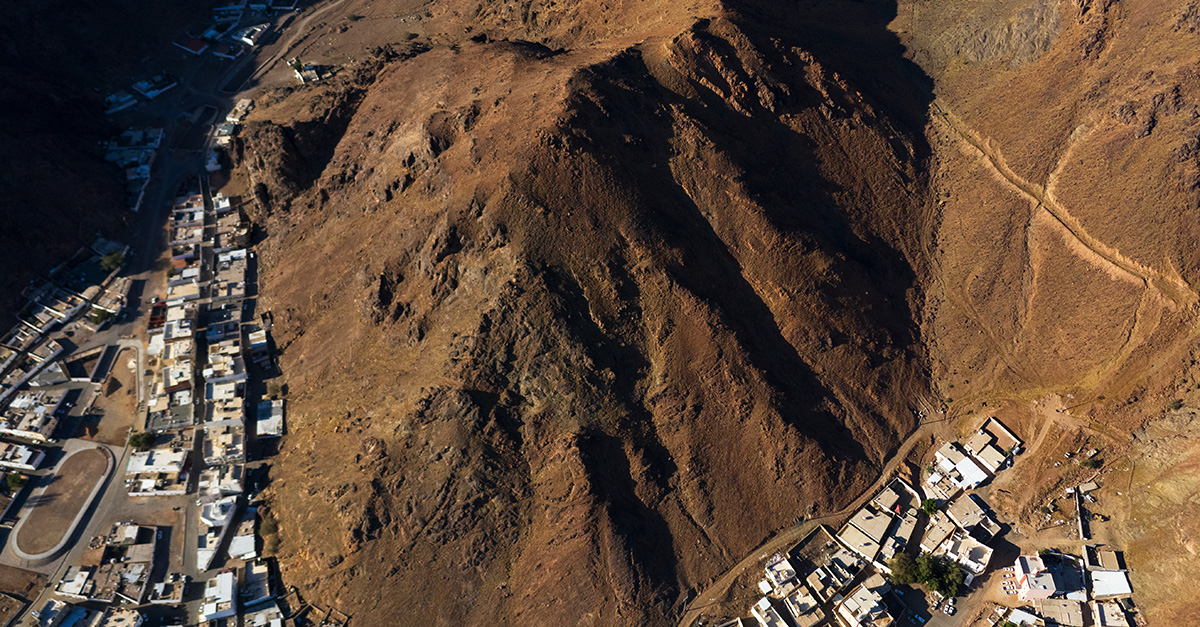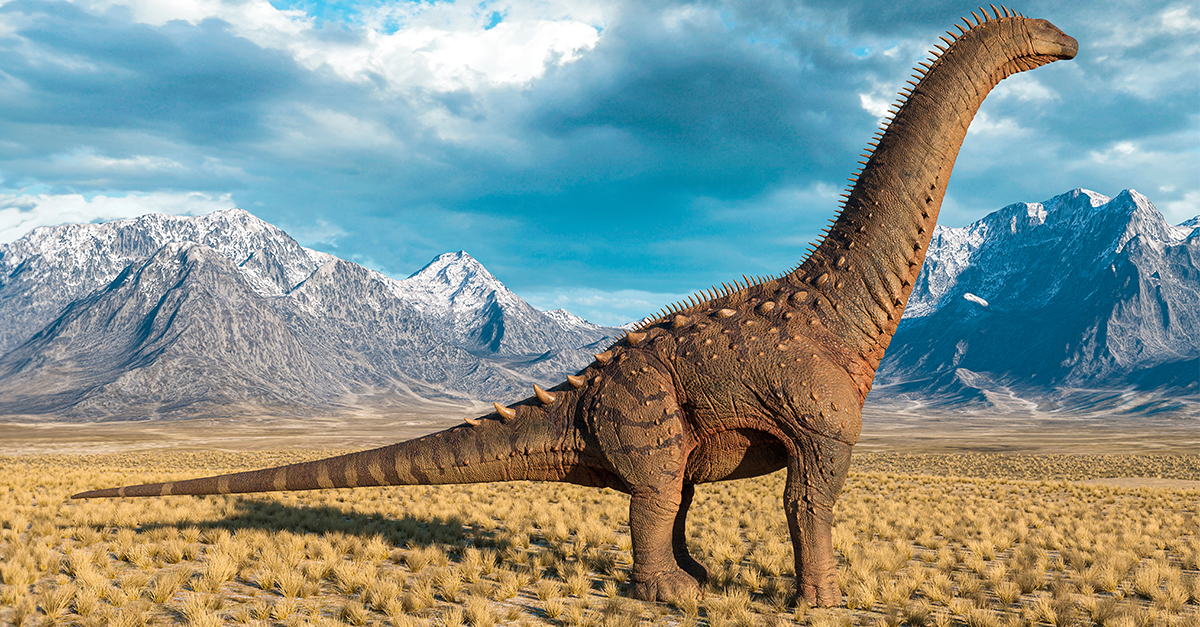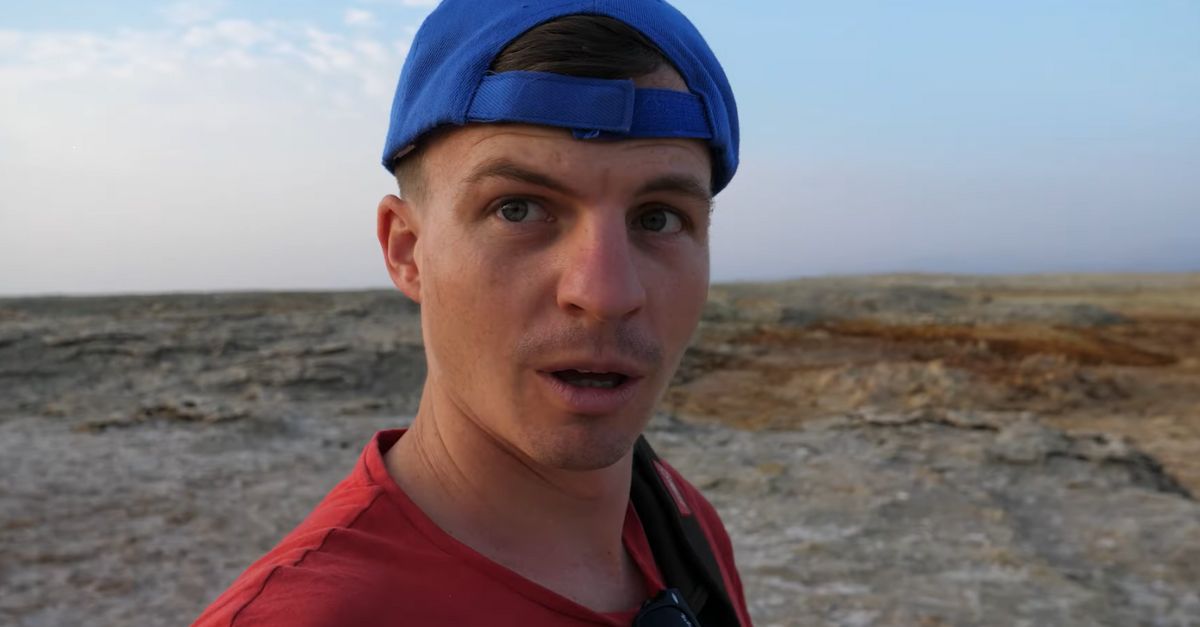Etruscan History Resurfaces
The Etruscans left no great texts and few clear records. But one remarkable tomb, sealed for over two millennia, now offers a rare glimpse into their world—one shaped by a culture that thrived long before Rome’s rise.
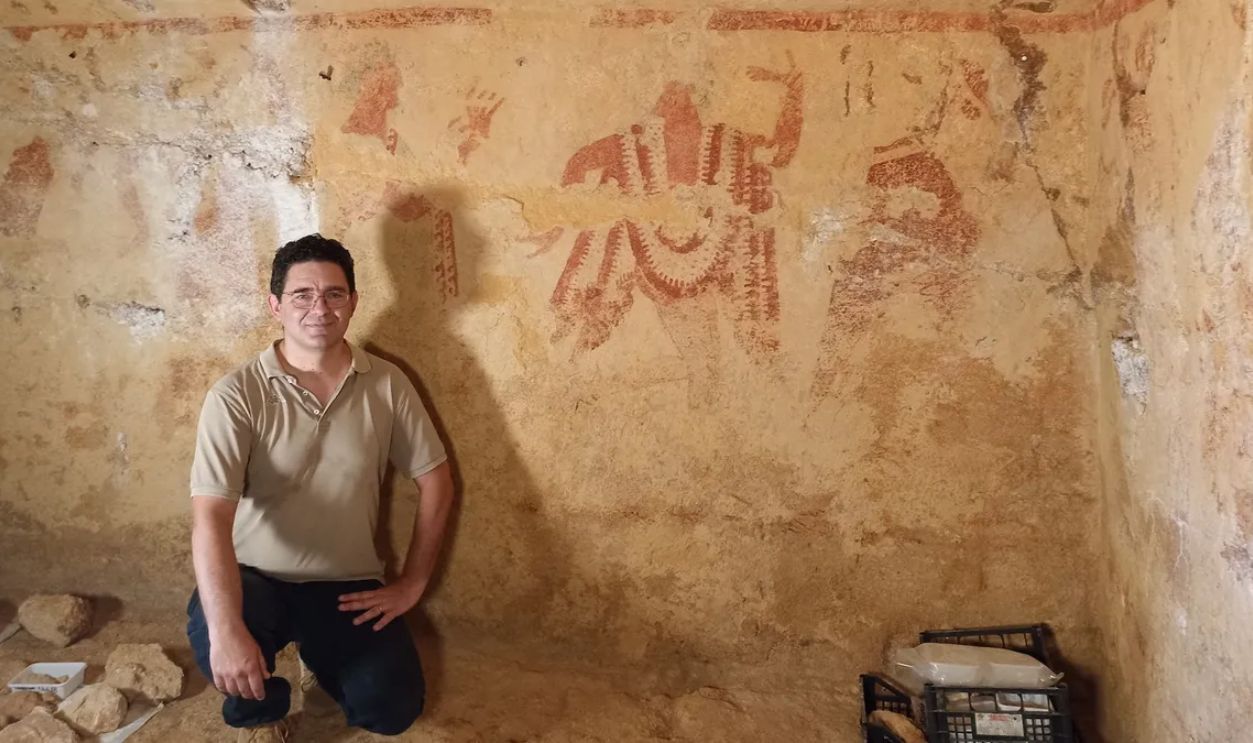
The Discovery That Shocked Archaeologists
What started as an ordinary construction project took a surprising turn when workers struck stone. Beneath the earth’s surface lay a 2,600-year-old Etruscan tomb, untouched by looters. Archaeologists were shocked, as such intact burial sites are incredibly rare.
Location And Project Details
This remarkable tomb lay hidden in Marturanum Regional Park near Barbarano Romano, Italy. Its excavation was a joint effort between Baylor University, Rome’s Virgil Academy, and, of course, Italy’s Ministry of Culture. It was a rare collaboration that highlights the significance of this find.
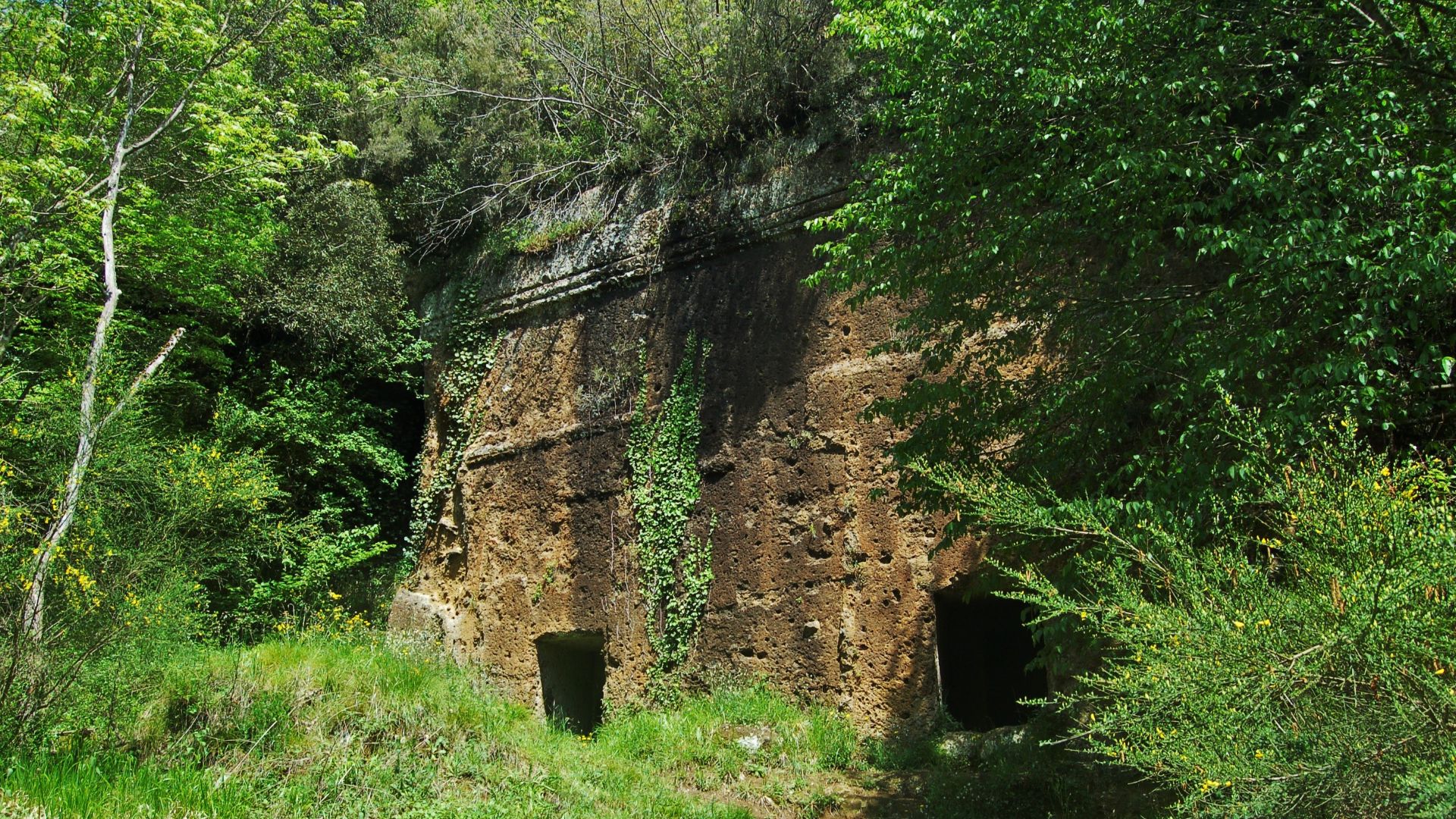 Virgilio Merisi, Wikimedia Commons
Virgilio Merisi, Wikimedia Commons
Who Were The Etruscans?
The Etruscans were a powerful ancient civilization in central Italy, thriving between 900 and 100 BCE. Known for their advanced cities, rich art, and mysterious language, they had a profound influence on Roman religion, architecture, politics, and more.
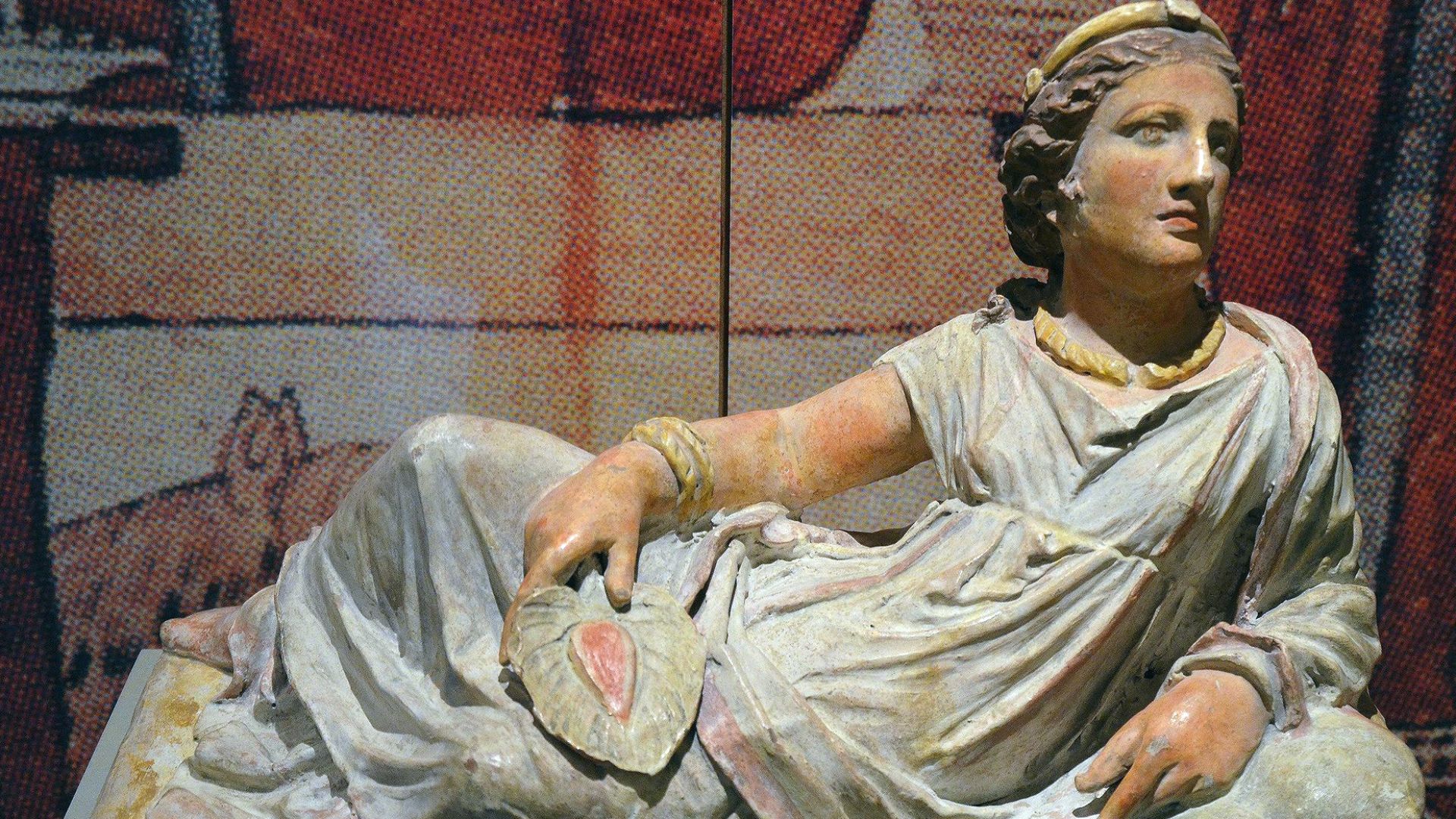 Thomas Ihle, Wikimedia Commons
Thomas Ihle, Wikimedia Commons
Revealing The Mystery Of The Etruscan Civilization
The Etruscans were once a major force in ancient Italy, but much about them remains unknown. Scientists haven’t yet cracked the language. So every artifact pulled from this tomb adds another clue and helps us better understand the culture of a people who thrived before the rise of Rome.
 Gary Todd from Xinzheng, China, Wikimedia Commons
Gary Todd from Xinzheng, China, Wikimedia Commons
Exploring Tuscany’s Hidden Burial Secrets
Though Tuscany may be famed for its vineyards and villas, its hills hold ancient secrets. This particular tomb stood out because it was completely sealed, something considered a miracle in a region where looting and erosion have destroyed many sites.
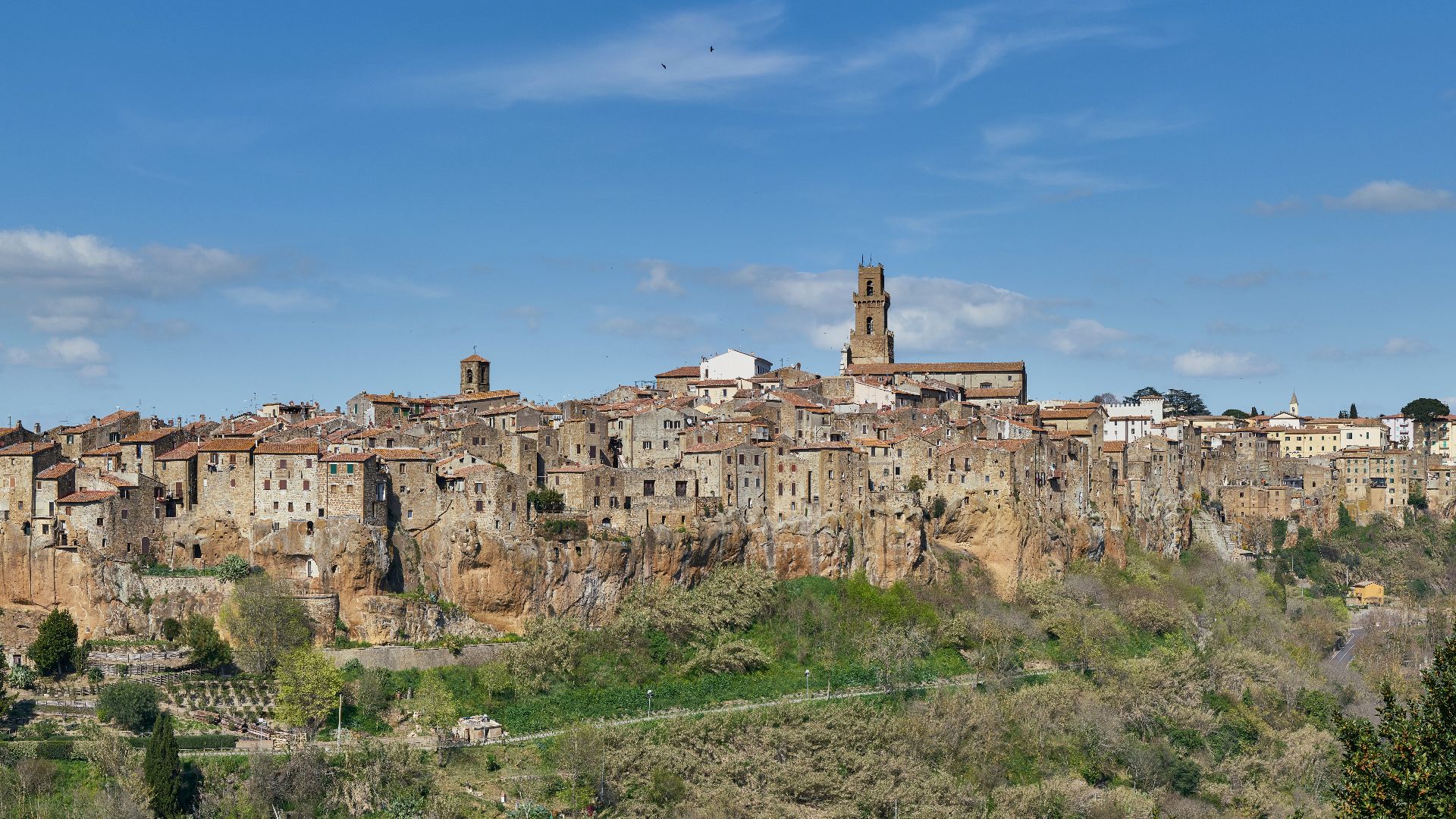 Virtual-Pano, Wikimedia Commons
Virtual-Pano, Wikimedia Commons
The Excavation That Led To The Tomb
The breakthrough didn’t happen by luck alone. A geophysical survey, meant for something else entirely, detected strange underground anomalies. That ripple on the radar sparked curiosity, and soon, shovels unearthed the ancient tomb. Such surveys are now vital tools for uncovering buried structures without disturbing the land.
Why This Ancient Tomb Remained Untouched For Centuries
So, how did this tomb stay hidden for over 2,000 years? Well, a rockfall blocked the entrance naturally and sealed it off from both people and time. That accidental barrier protected everything inside and preserved important information regarding Etruscan life.
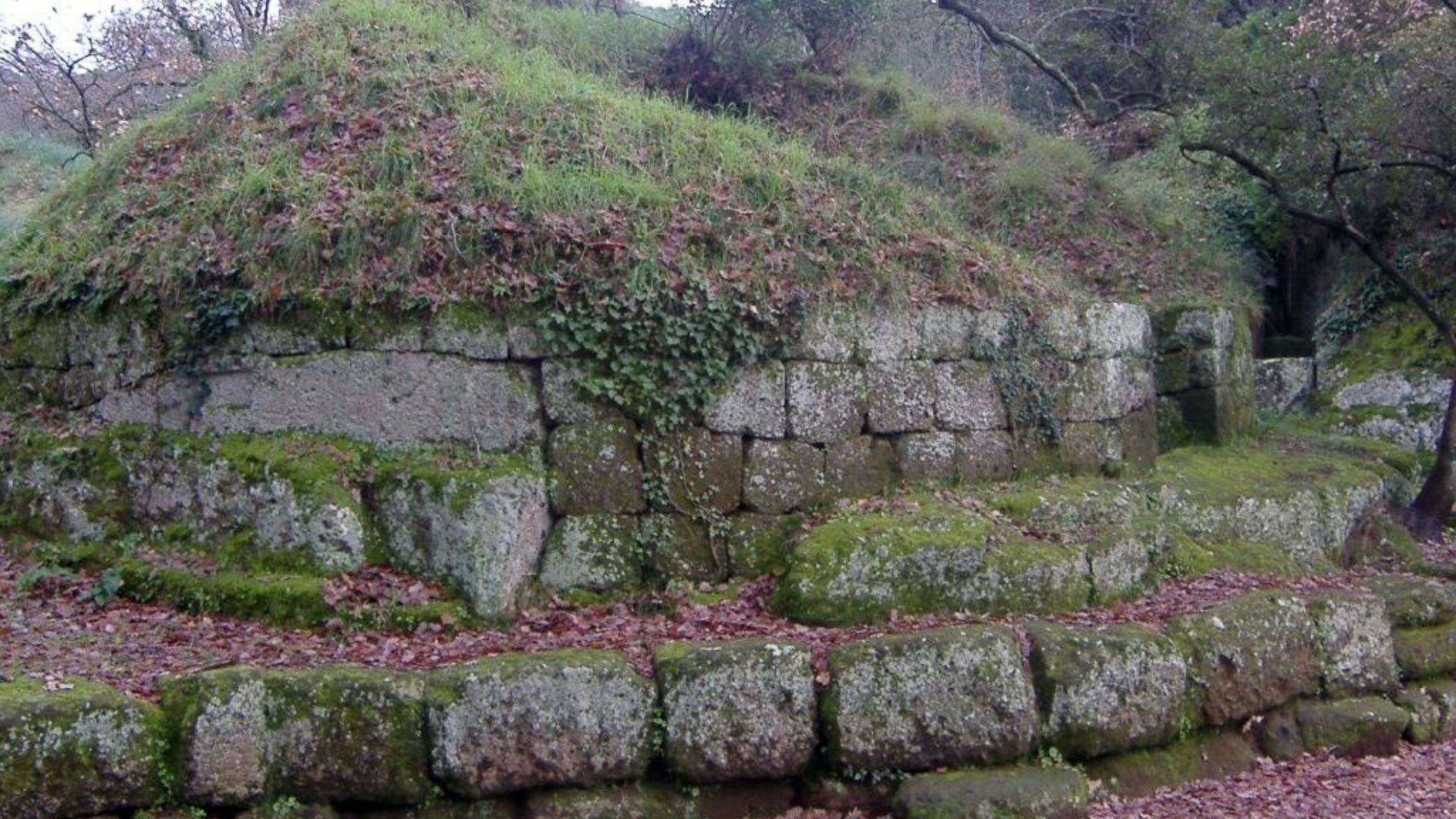 Luigi Guarino from Rome, Italy, Wikimedia Commons
Luigi Guarino from Rome, Italy, Wikimedia Commons
Introducing The Forgotten Four Found Inside The Tomb
Inside the tomb were four skeletons: two males and two females. One still had a bronze brooch pinned to fabric. Their positioning and grave goods suggest they were likely elite Etruscans, buried with care in a culture that placed deep importance on honoring the dead.
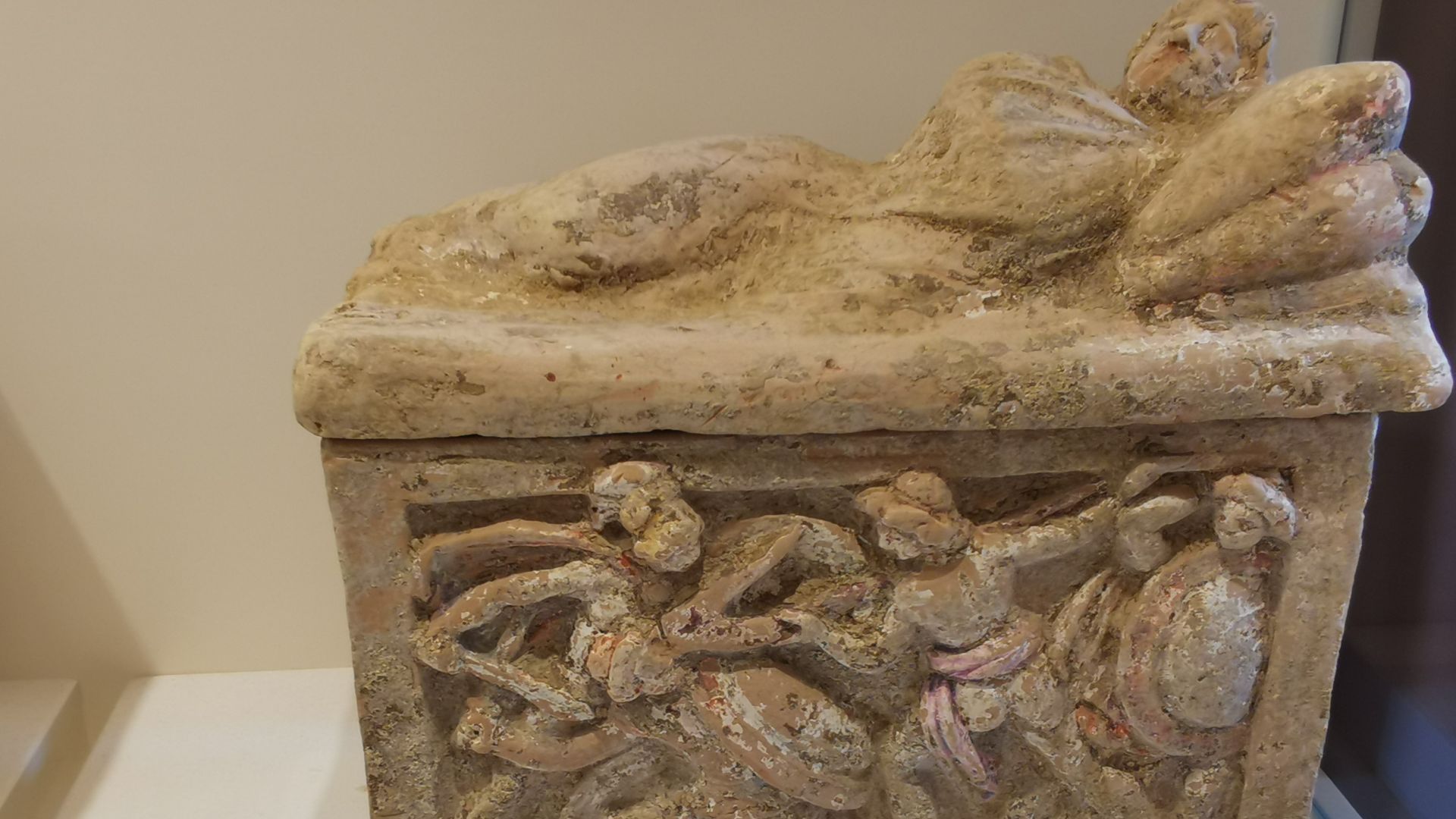 Elekes Andor, Wikimedia Commons
Elekes Andor, Wikimedia Commons
Unearthing Over 100 Grave Goods From The Tomb
Archaeologists also uncovered around 100 items, including intricately decorated pottery, bronze tools, ornaments, and a total of 74 nearly intact ceramic pots. All of these artifacts were well-preserved and will be used to provide rare insight into Etruscan ingenuity and life.
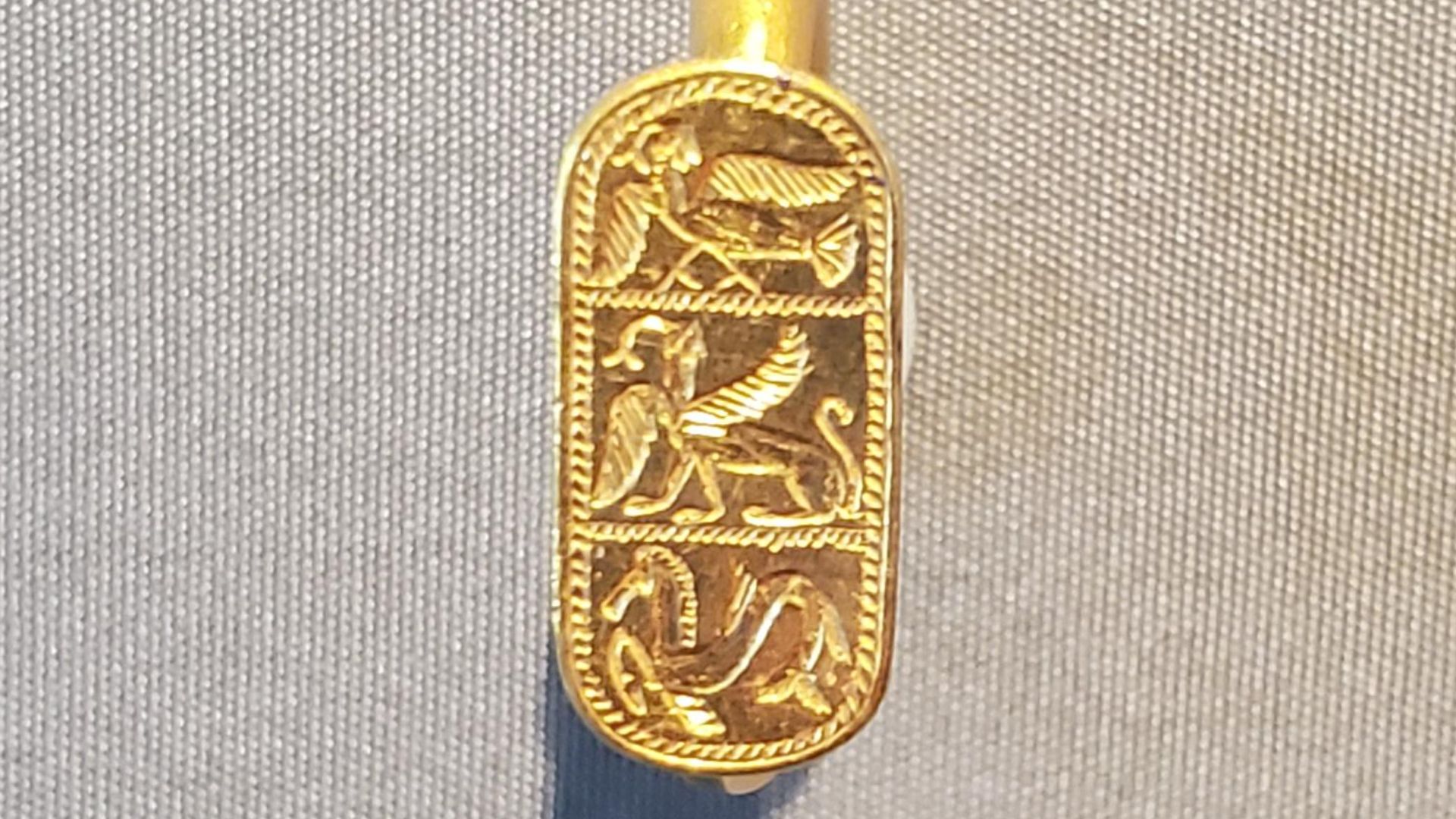 Culturalheritageassignment, Wikimedia Commons
Culturalheritageassignment, Wikimedia Commons
What The Dead Took With Them To The Afterlife
The Etruscans believed the afterlife needed supplies; think of it as packing for a long journey. So the dead were buried with food and weapons. These goods indicate a belief in an afterlife where such comforts would be needed.
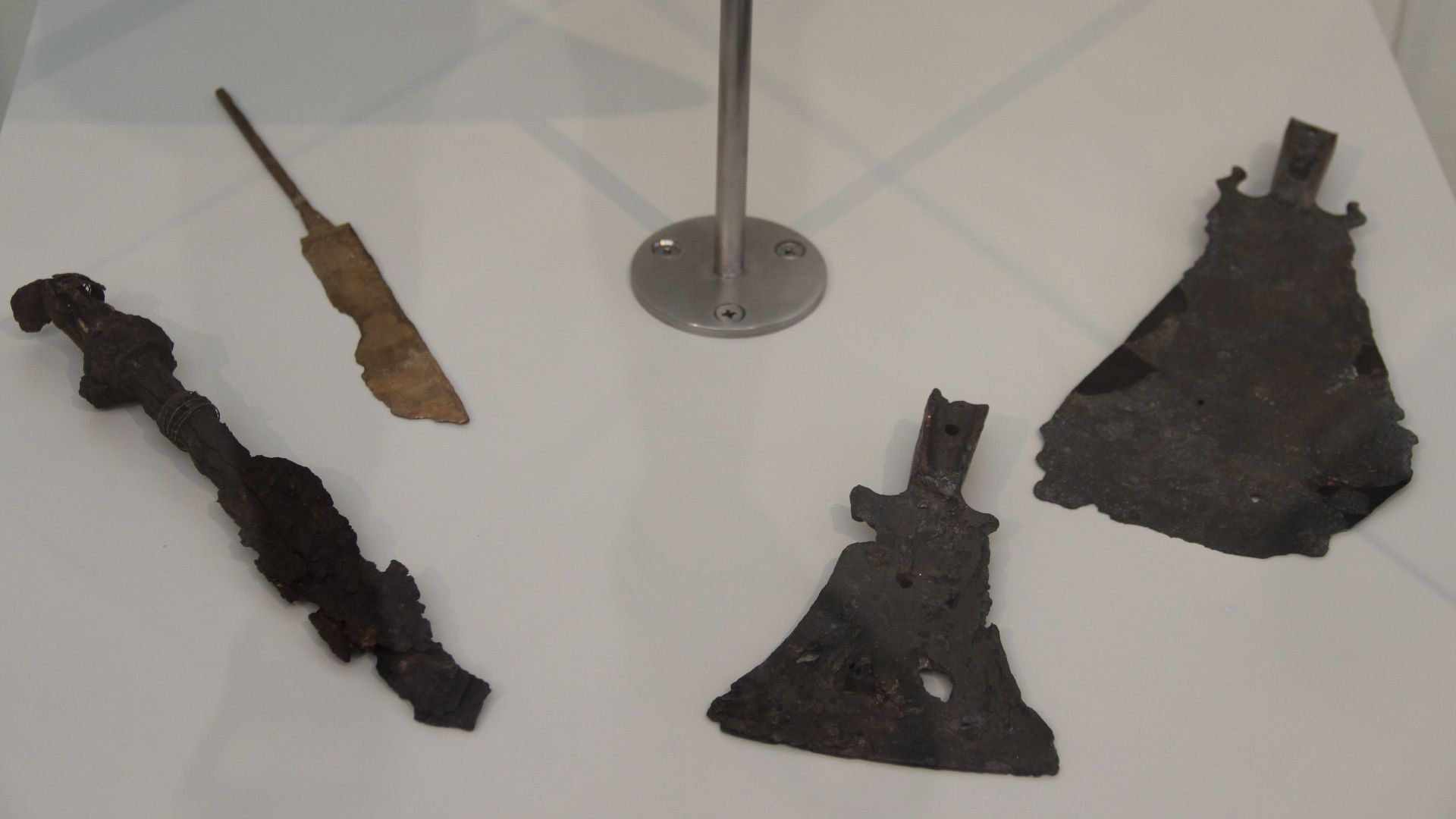 Gary Todd from Xinzheng, China, Wikimedia Commons
Gary Todd from Xinzheng, China, Wikimedia Commons
Clues To The Social Rank Of The Buried Individuals
To the Etruscans, status didn’t fade with death. One skeleton wore gold jewelry, which hints at noble heritage or elevated social standing. The quality of grave goods painted a quiet but powerful picture of class and identity in ancient Etruscan society.
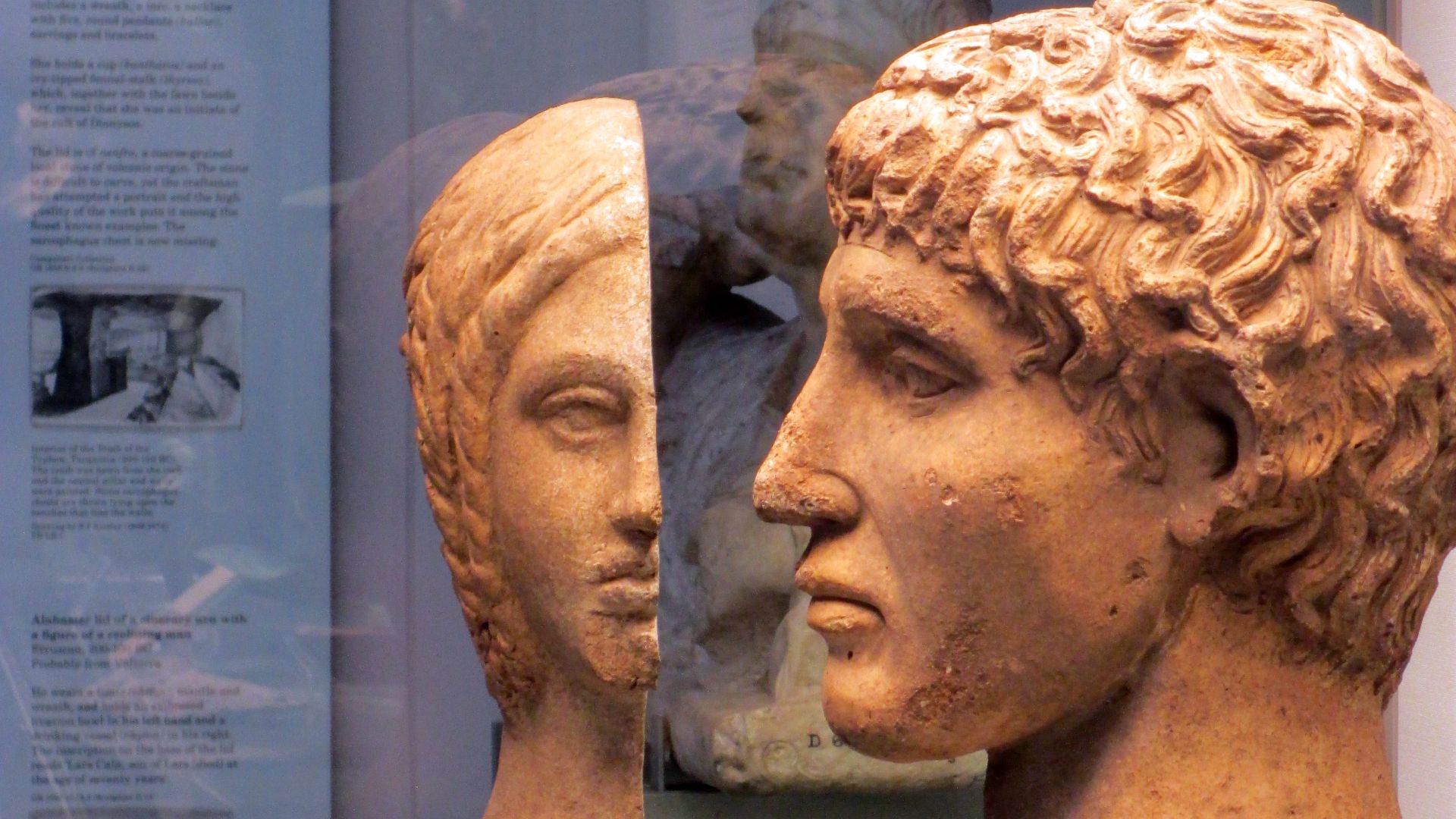 Lusanaherandraton, Wikimedia Commons
Lusanaherandraton, Wikimedia Commons
Etruscan Architecture And Engineering
The tomb was carved straight into solid bedrock, shaped like a tiny house with a pitched roof—classic Etruscan style. Inside, niches and drainage channels showed off their engineering skills. A ritual vase at the entrance hinted at burial rites held before the tomb was sealed.
The Tomb’s Inside Climate
Surprisingly, the tomb’s internal climate stayed steady for over 2,000 years. Its stable environment kept items like wood and fabric from falling apart. So, while other ancient sites crumbled, this one just sat quietly, waiting for the world to rediscover it.
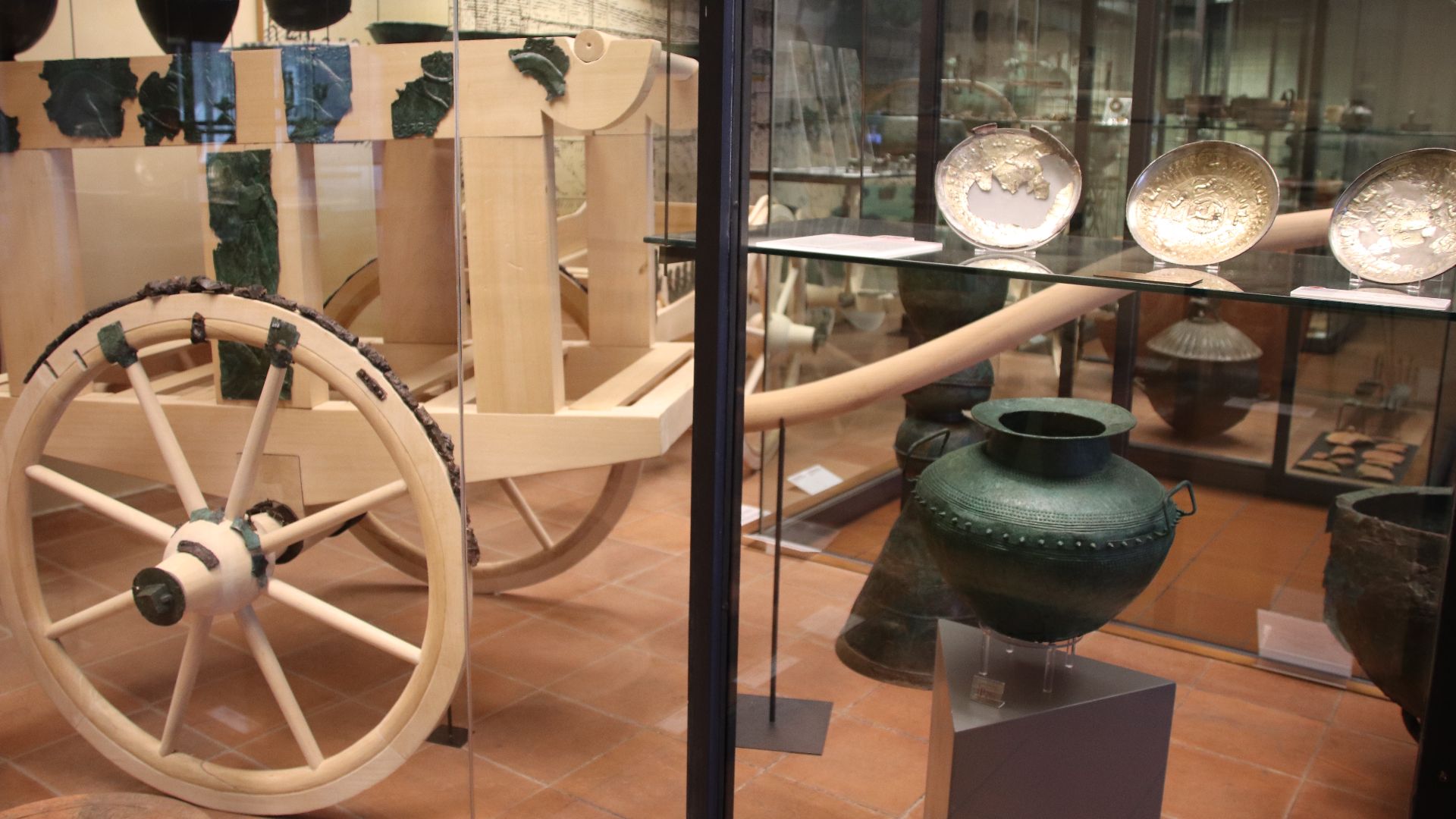 Gary Todd from Xinzheng, China, Wikimedia Commons
Gary Todd from Xinzheng, China, Wikimedia Commons
Pinpointing The Tomb’s Age
Carbon dating nailed the timeline down to around 400 B.C., a time when Etruscan influence was fading but still visible. The date also aligned with the beginning of Roman expansion. Interestingly, the timing gives researchers a rare glimpse into the cultural overlap between two major ancient civilizations.
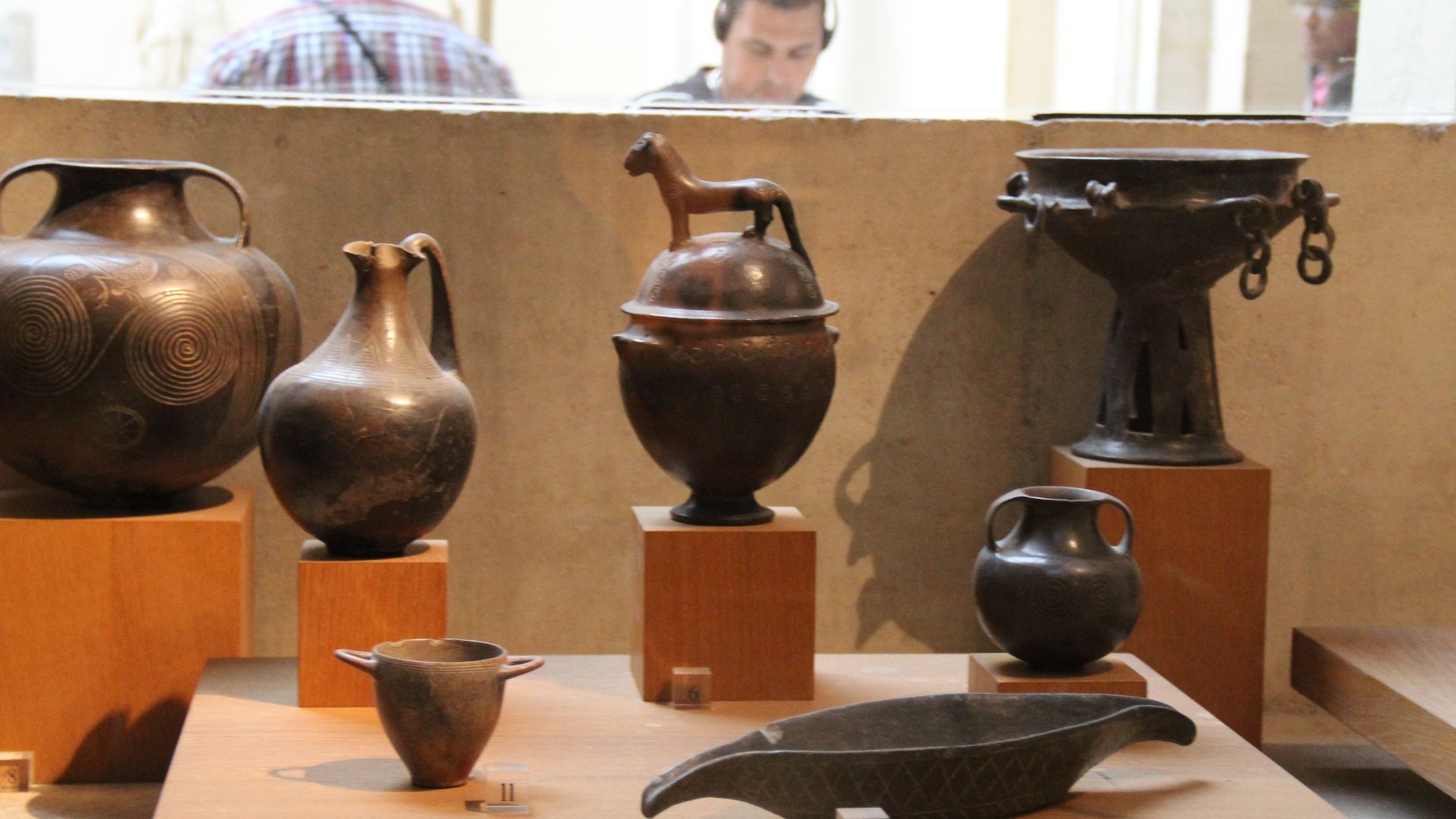 Gary Todd from Xinzheng, China, Wikimedia Commons
Gary Todd from Xinzheng, China, Wikimedia Commons
Clues About The Role Of Women In Etruscan Society
Now, here’s something unexpected: Etruscan women seemed to have had it pretty good. Artwork shows them eating alongside men and living more freely than women in many ancient cultures. Such a discovery overturned long-held assumptions about the inferiority of women in ancient societies.
Insights Into The Lives Of The Buried
The bones also told interesting stories about the physical lives of the dead. Signs of arthritis and healed fractures showed these people lived long and worked hard. They weren’t elites lounging in luxury, but everyday people who adapted and likely lived well into old age.
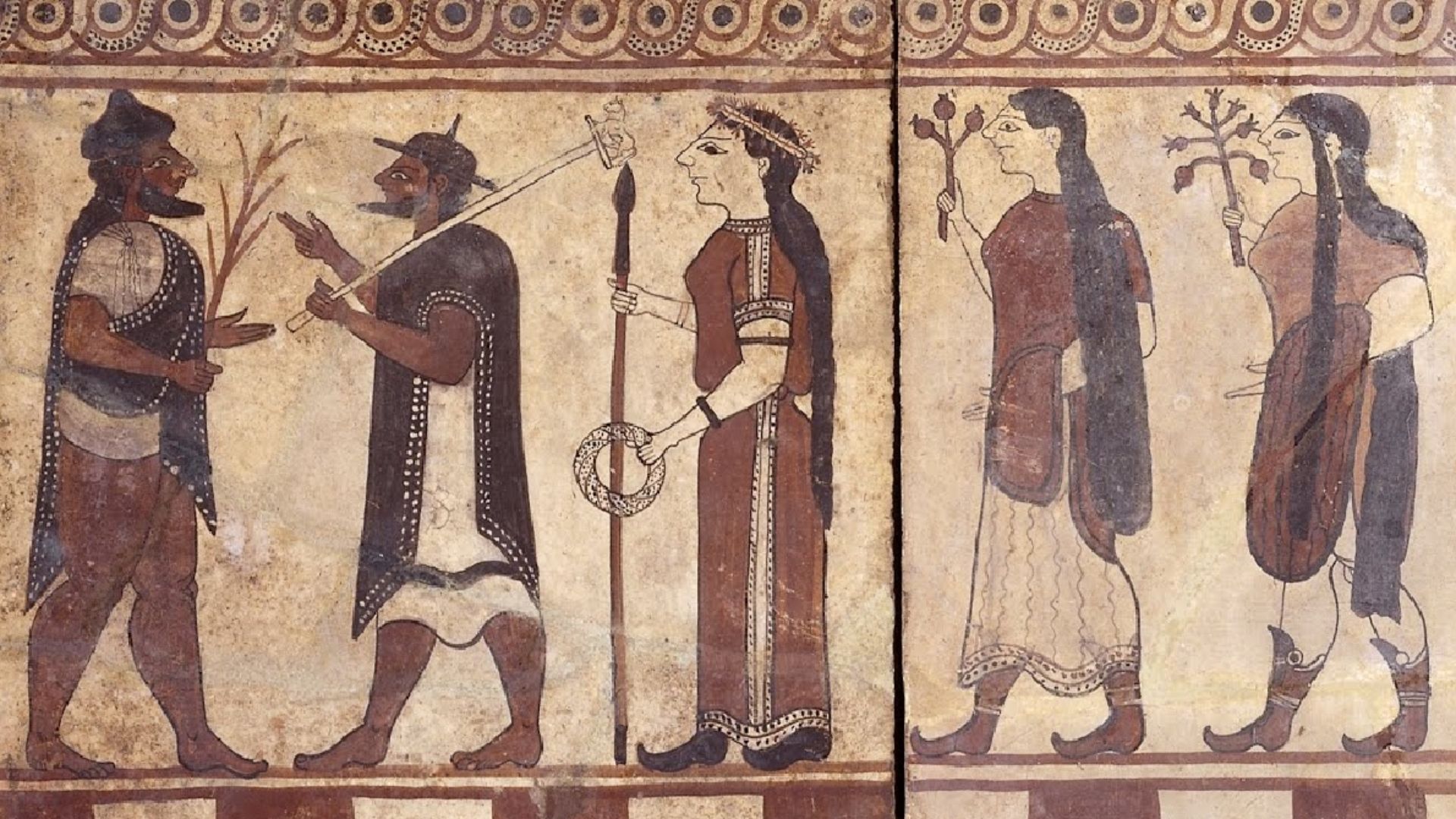 Unknown authorUnknown author, Wikimedia Commons
Unknown authorUnknown author, Wikimedia Commons
Decoding Symbolism In The Tomb’s Artifacts
The designs of the grave goods might have carried some spiritual meaning, too. For instance, pottery found in the tomb featured spiral motifs, believed to symbolize life’s continuous cycle. Used in funerary rituals, such symbols reveal how the Etruscans viewed death as part of a larger cosmic rhythm.
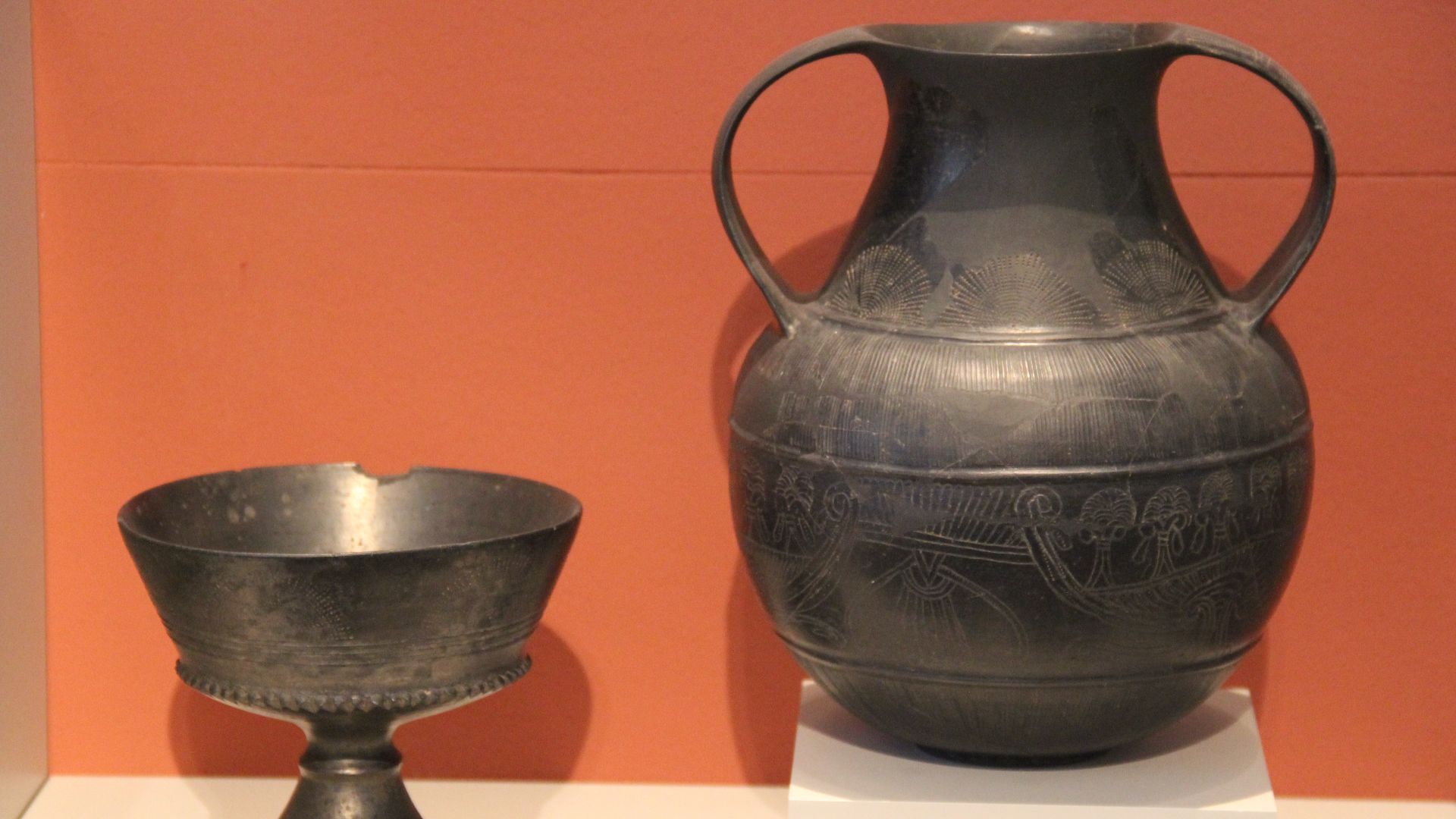 Gary Todd from Xinzheng, China, Wikimedia Commons
Gary Todd from Xinzheng, China, Wikimedia Commons
The Tomb Discovery Is Shaping Modern Archaeology
This rare find is now revolutionizing the approach to sealed environments worldwide. Its untouched nature is forcing archaeologists to slow down and carefully rethink their process. On-site, they introduced specialized tools and micro-excavation techniques, all designed to protect fragile materials and preserve every detail.
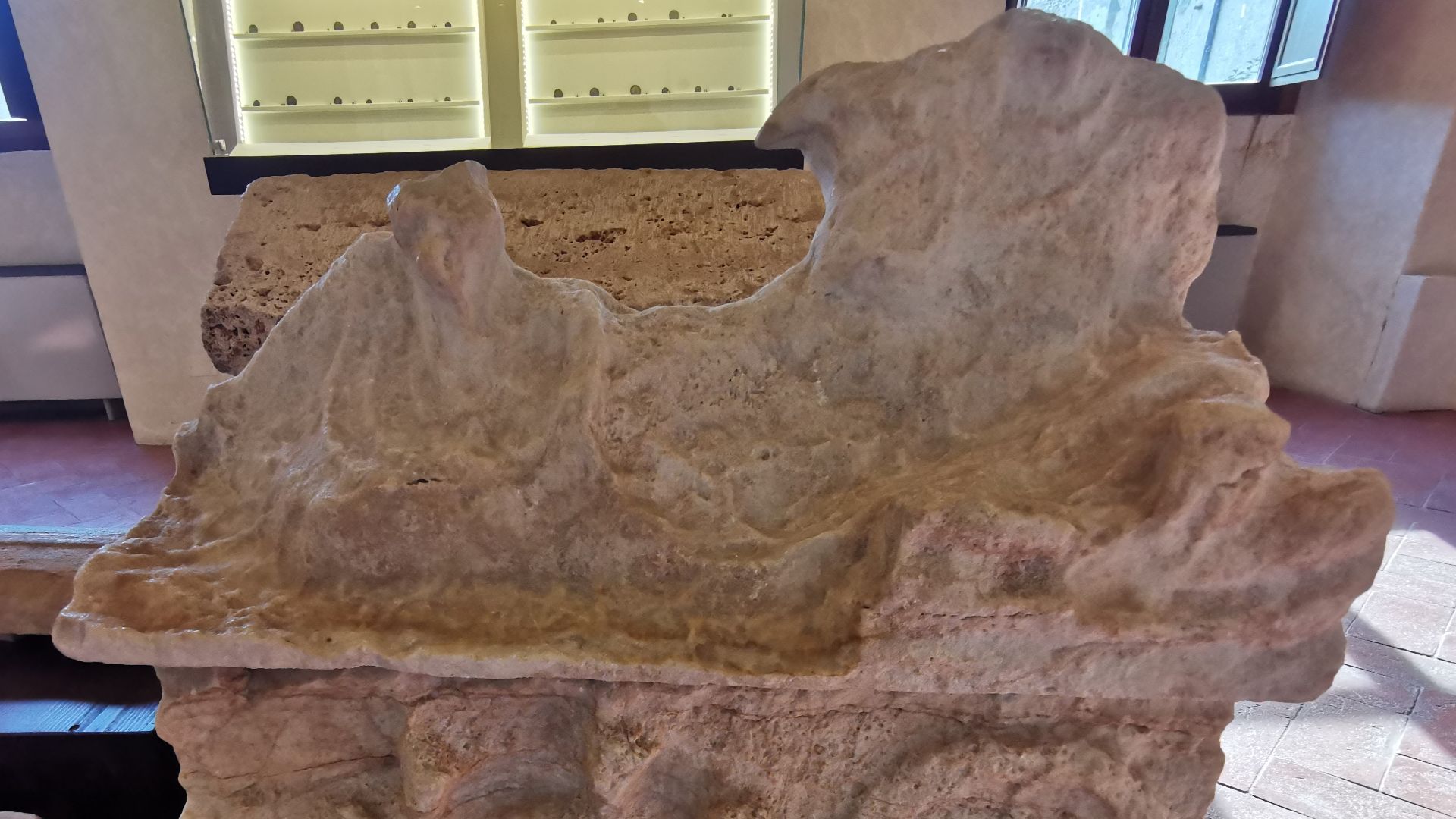 Elekes Andor, Wikimedia Commons
Elekes Andor, Wikimedia Commons
Echoes Of Etruscan Life In Modern Italian Culture
Turns out, the Etruscans left more behind than just tombs. They were early winemakers, and that tradition still thrives in Tuscany today. Even some town names trace back to Etruscan roots. Their culture quietly lives on in everyday parts of Italian life, especially in a glass of red.
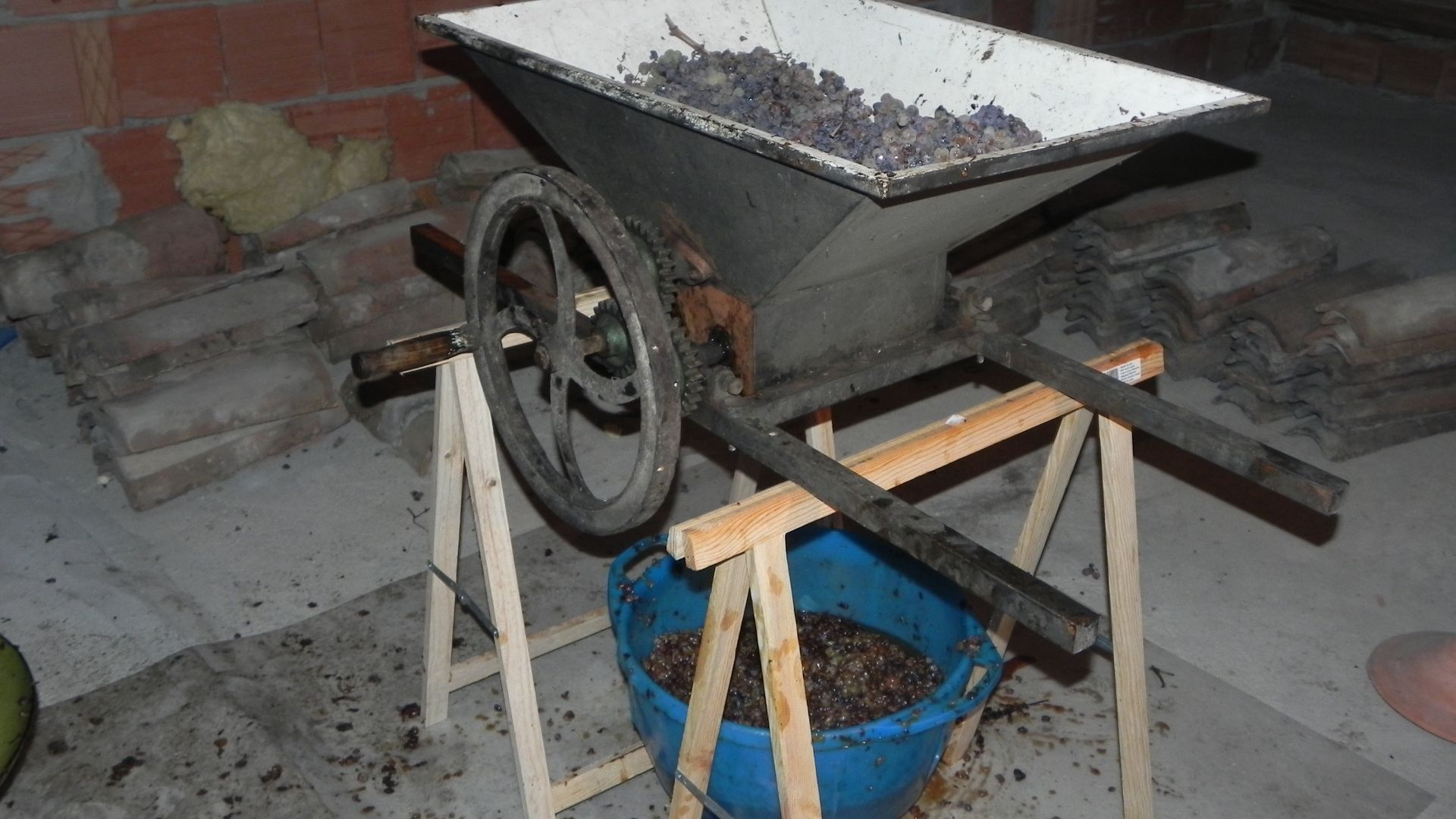 Gabriele Cantini, Wikimedia Commons
Gabriele Cantini, Wikimedia Commons
Comparison To Other Tombs
Over 600 tombs have been documented in this region, but nearly all were looted long ago, some even during Roman times. This tomb, however, remained sealed and untouched. It’s the first in the area excavated using modern techniques, giving archaeologists a rare, unspoiled glimpse into Etruscan burial life.
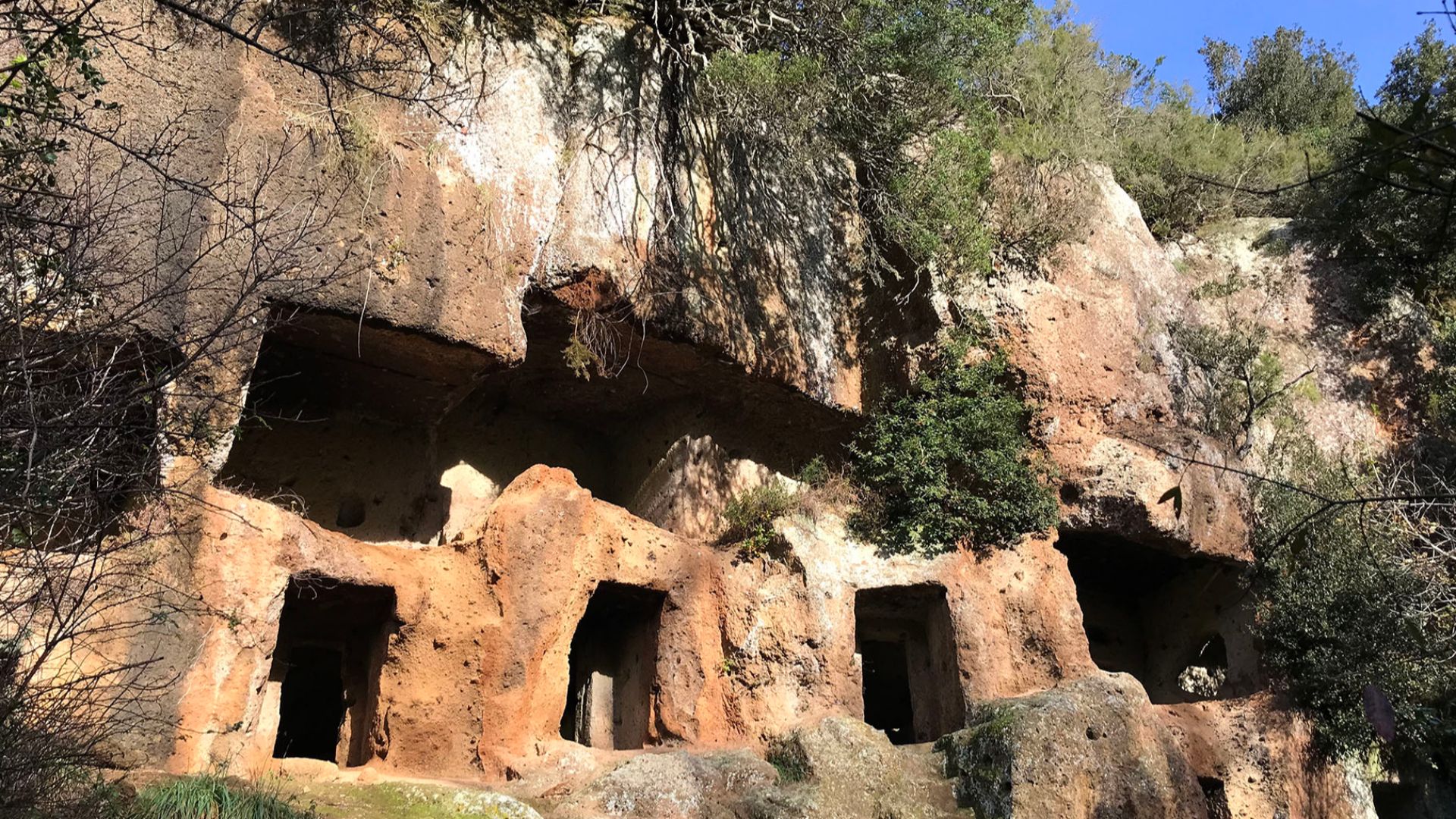 Maria Piccinini, Wikimedia Commons
Maria Piccinini, Wikimedia Commons
Plans To Display The Tomb’s Contents
Instead of hiding everything in a backroom vault, there are plans to bring the tomb to the public virtually. A 3D exhibit will let people explore the site without needing a plane ticket. It’s a kind of history that you can tour in your pajamas, no digging required.
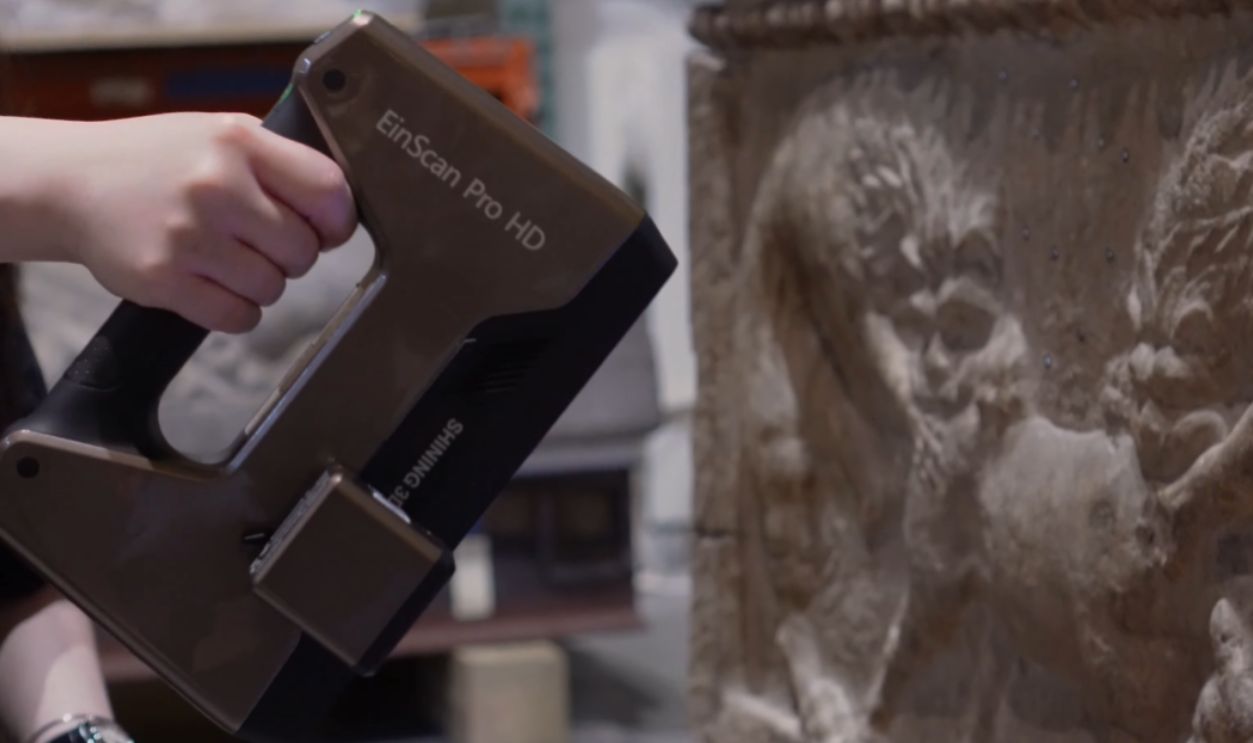 Digital Archeology at the Museum of Fine Arts: 3D Scanning Etruscan Sarcophagi by SHINING 3D
Digital Archeology at the Museum of Fine Arts: 3D Scanning Etruscan Sarcophagi by SHINING 3D
Protection Against Looting And Illegal Trafficking
Finding the tomb completely intact was a win against illegal antiquities trafficking. Italian heritage authorities are taking steps to protect these priceless artifacts from black market dealers. The site is now under the supervision of Italy’s Ministry of Culture, which enforces strict laws against looting.
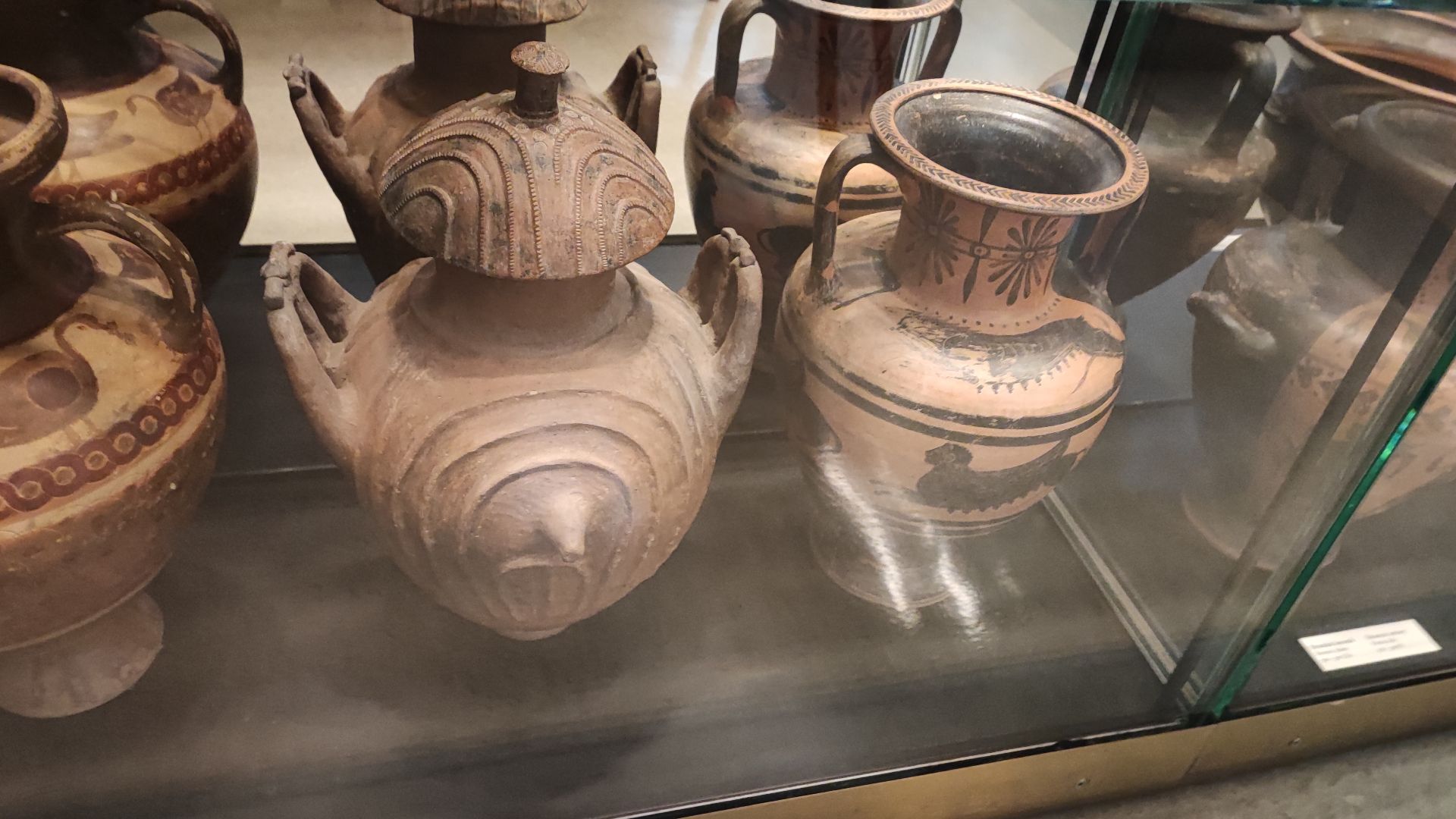 StarTrekker, Wikimedia Commons
StarTrekker, Wikimedia Commons
Lessons From The Tomb As A Historical Time Capsule
Beyond the grave goods and bones, the tomb held pollen and traces of ancient air. These clues help scientists understand what plants grew nearby, how clean the air was, and what the climate felt like. Findings suggest a temperate climate with mixed forests and cultivated land.
How This Tomb Is Rewriting What We Know
Each detail from the tomb, like the grave goods and the architecture, challenges long-held beliefs. Historians are rethinking what they thought they knew about Etruscan social structures and burial customs. They now believe Etruscan culture was more complex and layered than previously assumed.
Scientific Analysis Underway
The work is far from over, though. Researchers are conducting isotopic, anthropological, and genetic studies to uncover familial links among the buried. Every layer was excavated using micro-excavation and stratigraphic methods to ensure that even the smallest clues, like soil samples and bone fragments, are preserved in full scientific context.

